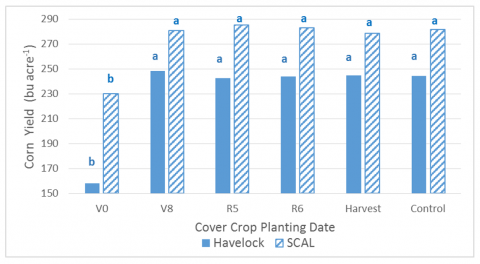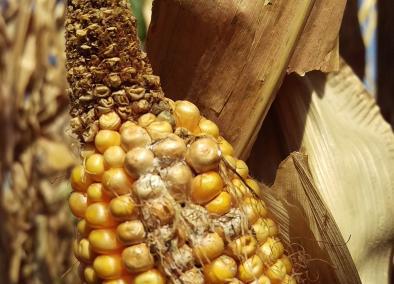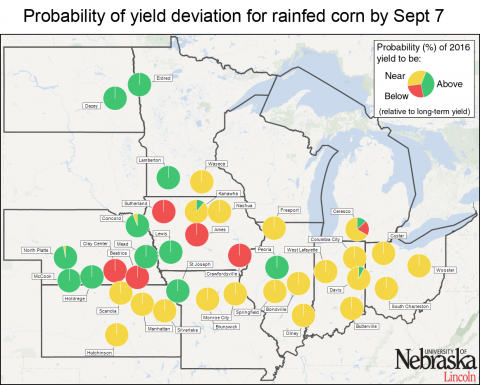Finding the Balance Between Corn Yield and Cover Crop Biomass
November 29, 2016
Cover crops can provide either ecosystem services or forage benefits but understanding how they fit in cropping systems is still limited. This study assessed the effects of planting date (early and late), plant population (low, average, and high) and corn maturity (80 to 115 days relative maturity) on corn yield.
Interseeding Cover Crops into Corn
November 29, 2016
This cover crop study looked at the effect on corn yield and cover crop biomass production from interseeding cover crops at various points in the corn production cycle.
Harvest 2016 — When Corn Yields are Below Expectations
October 14, 2016
A review of 2016 growing conditions across Nebraska sheds light on a number of factors that may have contributed to reduced yield in individual fields. An understanding of these factors may be helpful when selecting seed for 2017.
Yield Forecast Center Predicts Corn Yields Well Below USDA-NASS Projections
September 22, 2016
End-of-season yield forecasts for irrigated and dryland corn across eight states in the Corn Belt indicate above average yields for 2016, but not the record-breaking yields predicted by USDA in their September forecast. While two states are forecast to have yields below the 10-year average (-1% to -4%), the remaining states showed above average yields ranging from 1% to 21% above the 10-year average.
Corn Yield Forecasts as of Sept. 7
September 8, 2016
The Sept. 7 corn yield forecasts show a majority of the irrigated sites expected to produce above normal, but not record-breaking yields. Forecasted yields for rainfed sites are more variable, although most are expected to be near normal. Above average yields are expected for 11 of the 37 sites studied and below-normal yields are forecast for five sites.
Corn Yield Forecasts for Aug. 24, Including State Forecasts
August 25, 2016
August 24 corn yield forecasts for 41 sites across the Corn Belt showed many near or above average. At Nebraska rainfed corn sites there is a high probability (>75%) of above-average yield at the North Platte and central east sites and a high probability (>75%) of below-average yield at the southwestern and southeastern Nebraska sites (McCook, Clay Center, and Beatrice). In irrigated corn there was a high probability of near or above average yields for all except the Beatrice site. See the story for data tables and discussion.
Corn Ear Formation Issues Likely Correlated With the Loss of the Primary Ear Node
August 19, 2016
UNL agronomists and educators responding to grower questions surveyed a number of corn fields this week and found a range of corn ear issues: short husks, dumbbell-shaped ears, and multiple ears per node. The article describes and discusses the situation, potential stress agents, and the development of corn. It also encourages growers to check their fields pre-harvest to better assess causes of potential yield loss.
2016 Corn Yield Forecasts as of Aug. 10
August 11, 2016
Simulations of 2016 end-of-season corn yield potential for 41 sites indicate high probability of near or above-average yields in irrigated fields, but much more variability across the Corn Belt for rainfed fields. Several sites in southern and northeast Nebraska and in Iowa show a higher probability of below average yields. The article includes yield forecasts for each site, along with conditions for the period contributing to the forecasts.









